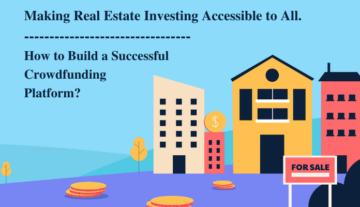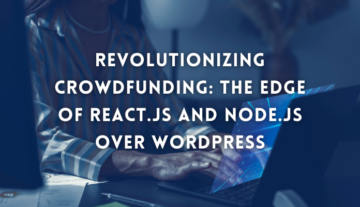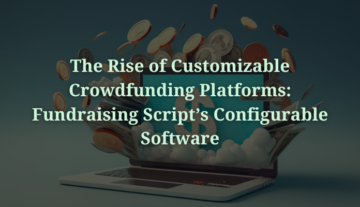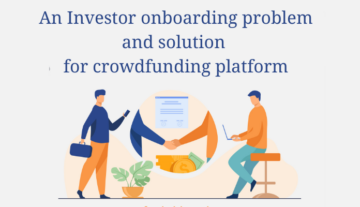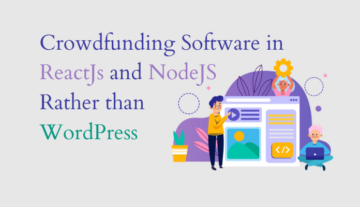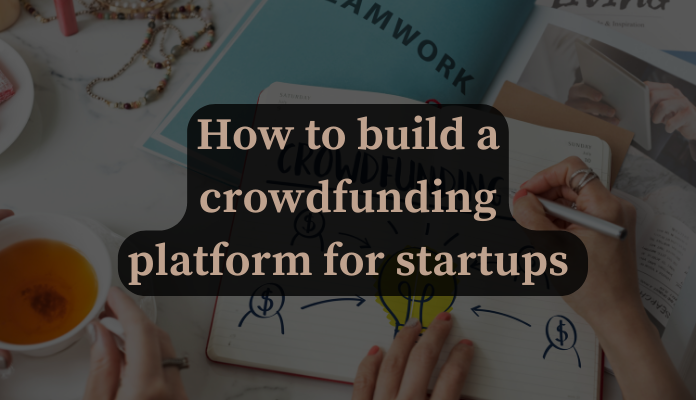
Crowdfunding has opened up new avenues for startups to raise early stage capital by pooling small investments from a distributed community globally. Beyond popular rewards-based models, structured investment instruments offering equity or debt participation in return for capital are also rising. This guide explores considerations for who looking to start own white-label crowdfunding website solution for startup, covering investment frameworks, features, regulations and more.
Whether taking a niche focus or mainstream multi-category approach, critical steps in launching such a fundraising website solution effectively involve:
Evaluating Investment Crowdfunding Approaches
While rewards or donations remain popular, investment-based models allowing backers actual equity or debt stakes in projects are rising exponentially. The structures lead to divergent founder obligations and investor rights.
Equity-based Crowdfunding
Enables backers to buy ownership shares in startups seeking capital, akin to angel investor participation. Extends existing cap tables mimicking venture allocation stages at smaller ticket sizes.
- Advantages include no repayment pressures with just eventual liquidity event participation rights. Acts as validation for follow-on formal VC rounds. And helps build loyal customer-tribes with vested interest in seeing you succeed.
- The portal itself however needs advanced capabilities like cap table and automated compliance tools, shareholder voting modules, transfers tracking and secondary market visibility for investors.
Debt-based Crowdfunding
Funders provide capital not for ownership but in exchange for scheduled IOU repayments on principal and interest charges as per predefined loan contract terms.
- Advantages include flexibility in repayment structures better aligned with revenue forecasts. Starts establishing credit and banking relations history as well.
- The portal itself however needs features like automated loan origination workflows, tracking interfaces, credit risk models, insurance modules and collections mechanisms integrated deeply with reliable banking partners.
Applicable Global Crowdfunding Regulations
In the US, the SEC provides baseline investor protection, risk disclosure and platform compliance guidelines for both debt and equity models specifically. Additionally, state-wise lending laws and money transmitter statutes apply for crowd-lending platforms.
Pan-European regulation is also seeing major overhaul through ECSPR dictating capital raising advertising protocols, reporting requirements and operating conduct. Leading to consolidation in some markets as new registrations and balance sheet adjustments kick in across member states.
In major Asia Pacific markets, fund collection and interest distribution related statutes also applicable especially across Indonesia, India and parts of ASEAN.
So prudent legal consulting early across target operating jurisdictions is vital for startups choosing to build their own investment crowdfunding website solutions.
Core Platform Functionalities and Integrations
Whether taking a full-stack custom development approach or leveraging white-label crowdfunding software as a base, some essential crowdfunding platform features include:
- Multi-lingual interfaces covering various investor geographies
- Omni channel access – website, iOS and Android apps
- Progressive user onboarding with quick identity verification connectivity
- Automated underwriting logic and risk models specifically for debt financing
- Cap table management suites and nominee access for corporations issuing equity
- Tracking investment commitments and release schedules into issuer accounts through integrated payment systems like Stripe
- Secondary market visibility for equity investors
Allowing complete transparency for fundraisers and investors through their personalized out-of-the box dashboards and aligned stakeholder experiences centered around impact more than purely financial returns alone also a key differentiation opportunity from traditional platforms.
Marketing Techniques to Drive Adoption
Beyond smart technical foundations, driving fundraising success involves focused community building online and offline. Some proven tactics include:
- SEO optimized blogs, reports and content properties attracting niche founders
- University roadshows and accelerator program partnerships as deal sourcing channels
- Embedding expert call facilities, design tool discounts to aid campaign creation -geo-targeted social media advertising to relevant investor cohorts beyond general platforms
Cost Estimate Ranges for Crowdfunding Platform Build Out
Platform costs vary based on customization needs from using configurable white-label scripts to full-stack proprietary development.
- Starter MVP Site – $15,000 to $25,000
- Mid-Level Platform – $35,000 to $75,000
- Full-Scale Platform – $125,000 to $250,000
The range accounts for factors like – stage-wise capabilities depth, custom integrations needs, operations and growth marketing complexity.
Conclusion
By identifying precise early-stage capital gaps and structuring purpose-driven investment crowdfunding models – whether debt or equity-based, startups can mobilize funds directly from engaged communities rather than pursue traditional institutional financing alone. Conscientious execution is key.

- SEO Powered Content & PR Distribution. Get Amplified Today.
- PlatoData.Network Vertical Generative Ai. Empower Yourself. Access Here.
- PlatoAiStream. Web3 Intelligence. Knowledge Amplified. Access Here.
- PlatoESG. Carbon, CleanTech, Energy, Environment, Solar, Waste Management. Access Here.
- PlatoHealth. Biotech and Clinical Trials Intelligence. Access Here.
- Source: https://www.fundraisingscript.com/blog/how-to-build-crowdfunding-platform-for-startups-fundraising/?utm_source=rss&utm_medium=rss&utm_campaign=how-to-build-crowdfunding-platform-for-startups-fundraising
- :has
- :is
- :not
- $UP
- 000
- 1
- 400
- 500
- a
- accelerator
- accelerator program
- access
- Accounts
- across
- acts
- actual
- Additionally
- adjustments
- advanced
- Advertising
- Aid
- aligned
- allocation
- Allowing
- alone
- also
- and
- android
- Angel
- Angel Investor
- applicable
- Apply
- approach
- ARE
- around
- AS
- Asean
- asia
- asia pacific
- At
- attracting
- Automated
- avenues
- backers
- background
- background-image
- Balance
- Balance Sheet
- Banking
- banking partners
- base
- based
- Baseline
- Better
- Beyond
- Black
- blogs
- both
- Box
- build
- Building
- but
- buy
- by
- call
- Campaign
- CAN
- cap
- capabilities
- capital
- Capital Raising
- centered
- Channel
- charges
- choosing
- collection
- collections
- color
- COM
- commitments
- Communities
- community
- community building
- complete
- complexity
- compliance
- Conduct
- considerations
- consolidation
- consulting
- content
- contract
- Corporations
- Costs
- cover
- covering
- creation
- credit
- critical
- Crowdfunding
- custom
- customization
- dashboards
- deal
- Debt
- depth
- Design
- Development
- directly
- disclosure
- discounts
- distributed
- distribution
- donations
- drive
- driving
- Early
- early stage
- effectively
- engaged
- equity
- especially
- establishing
- estimate
- Europa
- Event
- eventual
- exchange
- execution
- existing
- Experiences
- expert
- explore
- explores
- exponentially
- extends
- facilities
- factors
- Features
- financial
- financing
- Flexibility
- Focus
- focused
- For
- For Investors
- For Startups
- forecasts
- formal
- Foundations
- founder
- frameworks
- from
- functionalities
- fund
- Fundraising
- funds
- gaps
- General
- Global
- Globally
- Growth
- guide
- guidelines
- helps
- here
- history
- How
- How To
- However
- HTTPS
- identifying
- Identity
- Identity Verification
- Impact
- in
- include
- india
- Indonesia
- Institutional
- instruments
- insurance
- integrated
- integrations
- interest
- interfaces
- into
- investment
- Investments
- investor
- Investors
- involve
- involves
- iOS
- IOU
- Issuer
- issuing
- itself
- jpg
- jurisdictions
- just
- Key
- kick
- Label
- launching
- Laws
- lead
- leading
- Legal
- lending
- leveraging
- like
- Liquidity
- loan
- logic
- looking
- loyal
- Mainstream
- major
- management
- Market
- Marketing
- Markets
- max-width
- mechanisms
- Media
- member
- models
- Modules
- money
- more
- MVP
- needs
- New
- niche
- no
- None
- obligations
- of
- offering
- offline
- on
- Onboarding
- online
- opened
- operating
- Operations
- Opportunity
- optimized
- or
- origination
- our
- Overhaul
- own
- ownership
- Pacific
- participation
- partners
- partnerships
- parts
- payment
- Payment Systems
- per
- Personalized
- PHP
- platform
- Platforms
- plato
- Plato Data Intelligence
- PlatoData
- Popular
- Portal
- precise
- pressures
- Principal
- Program
- projects
- properties
- proprietary
- protocols
- proven
- provide
- provides
- purely
- pursue
- Quick
- raise
- raising
- range
- ranges
- Rate
- rather
- regulations
- related
- relations
- release
- relevant
- reliable
- remain
- repayment
- repayments
- Reporting
- Reports
- Requirements
- return
- returns
- revenue
- Rewards
- rights
- rising
- Risk
- risk models
- rounds
- ROW
- schedule
- scheduled
- scripts
- SEC
- secondary
- Secondary Market
- seeing
- seeking
- shareholder
- Shares
- sheet
- site
- sizes
- small
- smaller
- smart
- Social
- social media
- Software
- solution
- some
- Sourcing
- specifically
- Stage
- stages
- stakeholder
- stakes
- starts
- Startups
- States
- Steps
- structured
- structures
- structuring
- succeed
- success
- such
- Systems
- table
- tactics
- taking
- Target
- Technical
- techniques
- terms
- than
- The
- their
- this
- Through
- ticket
- to
- tool
- tools
- Tracking
- traditional
- transfers
- Transform
- Transparency
- underwriting
- us
- User
- using
- validation
- various
- vary
- VC
- venture
- Verification
- visibility
- vision
- vital
- votes
- Voting
- Website
- WELL
- whether
- white
- white label
- WHO
- with
- workflows
- you
- zephyrnet


